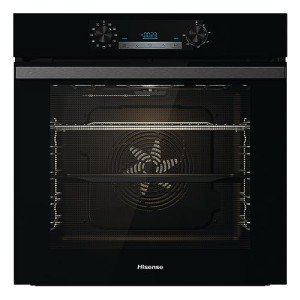The Benefits of Self-Cleaning Ovens: A Comprehensive Guide
In the modern kitchen, convenience and efficiency are vital. One appliance that has gotten tremendous appeal due to its ease of use is the self-cleaning oven. With its automated cleaning cycle, this ingenious technology not only saves time but likewise streamlines the process of maintaining a tidy cooking space. This post looks into the various benefits of self-cleaning ovens, their numerous cleaning techniques, and responses to often asked questions.
Comprehending Self-Cleaning Ovens
Self-cleaning ovens are developed to streamline the typically tiresome task of cleaning. They usually make use of one of two main techniques: high heat (pyrolytic cleaning) or steam cleaning. Each technique has its particular benefits, ensuring that the home appliances work efficiently.
Cleaning Methods Explained
Pyrolytic Cleaning:
- During the pyrolytic cleaning process, the oven warms up to exceptionally heats, often going beyond 850 ° F(450 ° C). Food residues are incinerated and transformed into ash, which can be easily cleaned away.
Steam Cleaning:
- Steam cleaning ovens rely on water to create steam that loosens up food particles.
- This technique typically operates at a lower temperature level and needs a little bit of manual cleaning after the cycle finishes.
| Cleaning Method | Temperature level Range | Cleaning Duration | Cleaning Residues | Manual Work Required |
|---|---|---|---|---|
| Pyrolytic | Approximately 900 ° F( | 482 ° C) 2 to 4 hours Ash | Very little | |
| Steam Cleaning | 250 ° F to 350 ° F( | 120 ° C to 175 ° C) 30 to 90 minutes Damp residues | Moderate |
Benefits of Self-Cleaning Ovens
Self-cleaning ovens featured an array of benefits that make them a rewarding investment for any home cook. Below are the main benefits:
1. Time-Saving Convenience
- Automatic Cleaning Cycles: Once the oven is set, users can leave it unattended during the cleaning cycle, maximizing important time.
- Less Frequent Cleaning: The self-cleaning function enables less frequent handbook scrubbing, making it more workable for busy households.
2. Improved Hygiene
- Reliable Sanitization: High temperatures throughout pyrolytic cleaning successfully kill germs and bacteria, resulting in a cleaner, more sanitary cooking environment.
- Prevention of Cross-Contamination: Regular self-cleaning minimizes the threat of food residues resulting in cross-contamination.
3. Improved Cooking Performance
- Consistent Heat Distribution: A tidy oven cooks food more uniformly, as filthy surfaces can soak up heat in a different way, causing irregular cooking.
- No Unpleasant Odors: By burning off food residues, self-cleaning eliminates remaining smells from past meals.
4. Environmental Considerations
- Minimized Chemical Use: Many self-cleaning ovens do not need harsh chemical cleaners, promoting a green approach to oven maintenance.
- Energy Efficient Options: Some models are designed with energy conservation in mind, utilizing very little power throughout cleaning cycles.
5. Increased Home Value
- Appealing Kitchen Features: A self-cleaning oven can be an appealing function for possible home purchasers, boosting the general worth of the residential or commercial property.
6. User-Friendly Operations
- Simple Controls: Most self-cleaning ovens are equipped with simple controls, allowing users of all levels to operate the function with ease.
Maintenance Tips for Self-Cleaning Ovens
While self-cleaning ovens drastically decrease the time spent on cleaning, some standard maintenance tips must still be followed to guarantee longevity and efficiency:
- Use the Feature Regularly: To prevent the buildup of persistent discolorations, run the self-cleaning cycle every few months.
- Burn Off Spills Promptly: For minor spills, consider running a quick cleaning cycle right after cooking.
- Inspect Seals and Gaskets: Ensure that the oven door seals are undamaged to keep heat throughout the cleaning process.
- Wipe Down after Cleaning: An easy wipe-down after the cleaning process can assist preserve the cleanliness of the oven.
Often Asked Questions (FAQs)
1. How often should I utilize the self-cleaning feature?
It's advised to use the self-cleaning feature every couple of months or whenever you discover an excessive accumulation of grease and food particles.
2. Is the self-cleaning cycle safe for all oven types?
The majority of modern-day ovens are created to handle self-cleaning features, but it is vital to check the maker's standards. Older models may need manual cleaning instead.
3. Can I use a self-cleaning oven while pregnant or with animals in the house?
It is a good idea to avoid being around the oven during the self-cleaning cycle due to high temperatures and possibly odor-producing fumes. It's safer to guarantee the location is well-ventilated and devoid of pets and children throughout the process.
4. For how long does Self Cleaning Oven Features -cleaning cycle take?
A self-cleaning cycle can range from 30 minutes (steam cleaning) to a number of hours (pyrolytic cleaning), depending on the oven design and the intensity of the cleaning.
5. Will self-cleaning damage my oven?
When utilized according to the maker's recommendations, self-cleaning need to not harm the oven. Nevertheless, utilizing the feature excessively may lead to unnecessary wear, so it's essential to follow use guidelines.
In conclusion, self-cleaning ovens are an exceptional innovation that marries technology with convenience, supplying many benefits that boost the cooking experience. From time-saving capabilities to enhanced hygiene, these ovens continue to be valuable additions to modern-day kitchens. Comprehending how to properly maintain and run a self-cleaning oven can further improve its benefits, making it an essential for anybody wanting to streamline and elevate their kitchen jobs.

